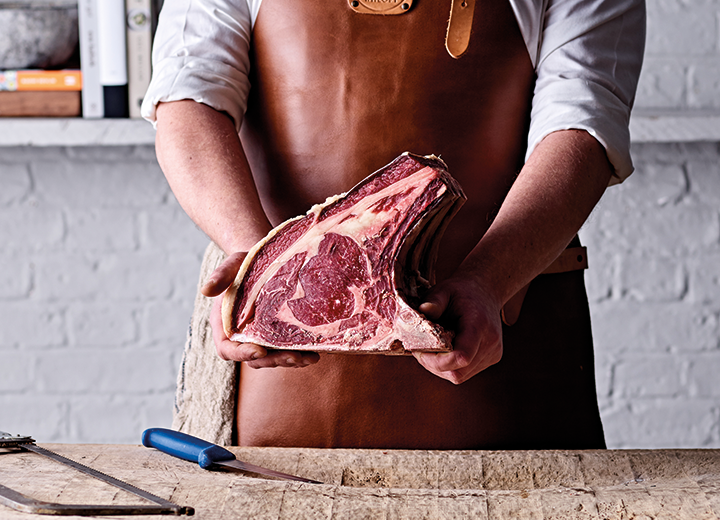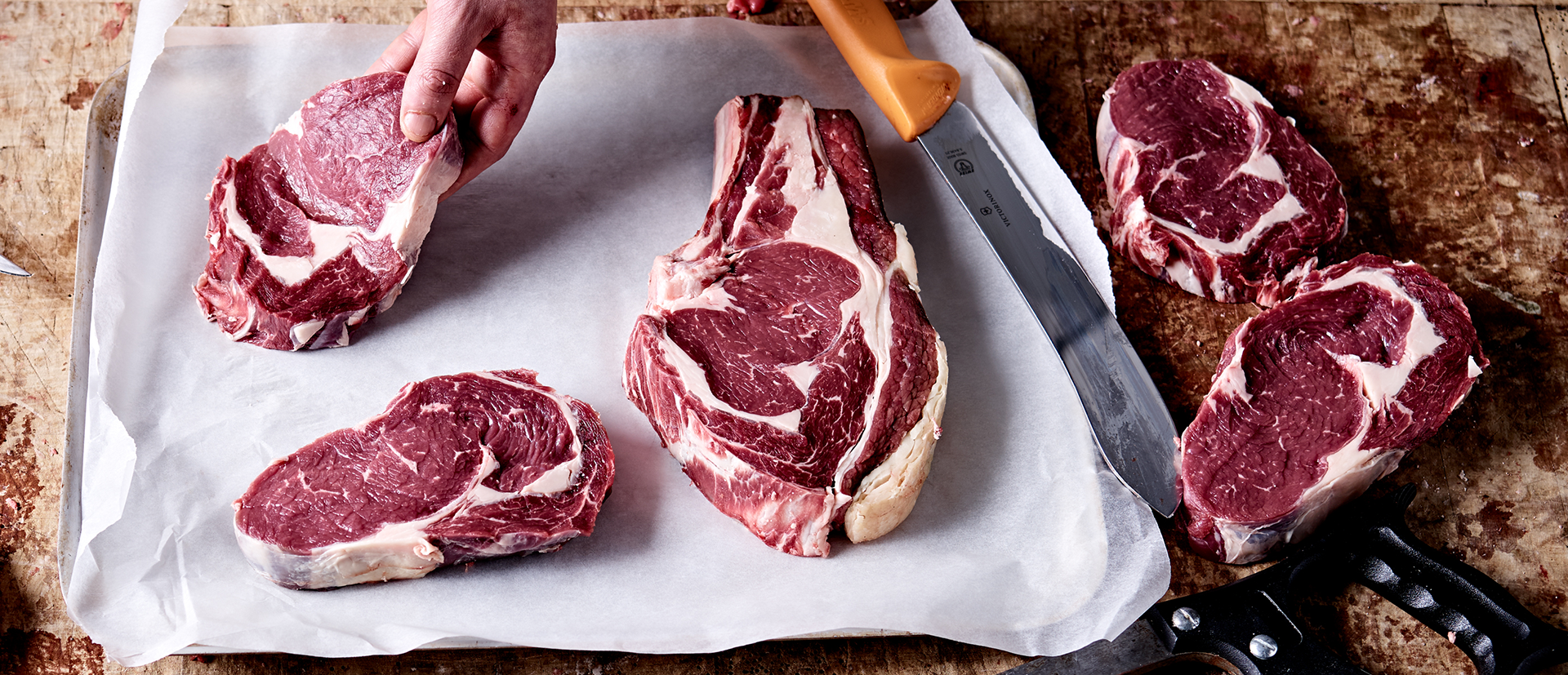You may have heard the word ‘marbling’ bandied around. It’s considered to be the holy grail of steaks and roasting joints, delivering meat that’s sumptuous and packed with flavour. But what actually is marbling?
As the name suggests, it’s when the muscle and fat in a cut of meat resemble a piece of marble, like your kitchen worktop for example. The flecks and seams of white are fat – intramuscular fat to be precise. It’s the most obvious way to judge the quality of a piece of meat. But why is it an indicator of quality?


Marbling takes time to develop as an animal grows. This is why it’s most commonly seen in beef, rather than lamb or pork. Beef animals take longer to grow to the desired weight and confirmation so they live longer than other species. Marbling is particularly prevalent in breeds that yield the best results with slow growth. These include Galloways, Highlands and Shorthorn cattle.
Exactly as is the case with people, animals ‘lay down’ fat when they take in more energy than they use. It’s important, though, that the fat develops slowly so that it’s balanced with muscle. Slow accumulation of fat creates marbling, as the muscle and fat overlay each other while the animal grows. Muscle that has grown slowly has better texture and flavour, so you’ll know that if your meat is well marbled, it’ll have taken a while to develop and will, therefore, be better quality. Really good marbling indicates the animal has grown naturally to maturity and has had plenty to eat.
Exactly what the animal has eaten is also important to the marbling seen in its meat. Ensuring your cattle have enough food to lay down marbled fat is easier if you feed them grain-based concentrates, which is what most cattle entering the food chain are fed in modern systems. We, however, believe in traditional farming and that means we feed a grass and forage diet all grown and harvested organically here at The Organic Butchery HQ.
With a concentrate diet, you know exactly how much energy your animals are taking in. So you can apply a bit of science to getting an animal to the right weight and shape at the right age. With grass-fed animals, it’s a bit trickier. You have to know your land, managing the ‘terroir’ (all of the environmental factors that affect crop growth) of your farm to ensure your grass is plentiful and adequately nutritious. Though it’s a bit harder, we think feeding grass is the right thing for cattle and sheep. They’re ruminant animals that have evolved to eat grass, meaning they have additional stomachs dedicated to digesting cellulose.
We also believe that grass-fed animals produce better meat. The fat is tastier, with a flavour that’s more complex and interesting. It also means that the meat with which the marbling is layered is more tender – making the eating experience all the more enjoyable.
So as a general rule of thumb, the more marbling you see in a cut of meat, the better quality it is. While it is, of course, just a little more complicated than that, you should let us worry about that. Because we’re the experts at growing, and you’re the expert at eating.
What's the point in hanging meat?
‘Ageing’ is the term used to describe the period between slaughter and butchery. When a carcass is stored in a controlled environment, enzymes in the muscles make the fibres softer and more elastic. This tenderises the meat without letting it spoil. Aging also lets the meat dry slightly, reducing the water content within the muscle. This further enhances the texture and brings out the flavour. It also means that when you cook with aged meat it won’t seep liquid or shrink.
Read More.png)


